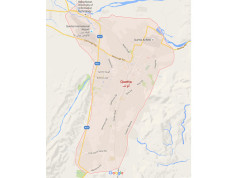Adil Haider
Almost no place has been spared — and no one. The deadly virus that first emerged a year ago in Wuhan, China, swept across the world in 2020, leaving havoc in its wake. World Health Organization has declared the COVID-19 pandemic as a global health emergency. It affected societies, global economies, and global environments.
More than any event in memory, the pandemic has been a global event. On every continent, households have felt its devastation — joblessness and lockdowns, infirmity and death. And an abiding, relentless fear. It has rapidly spread around the world, posing enormous health, economic, environmental, and social challenges to the entire human population. The coronavirus outbreak is severely disrupting the global economy. Almost all the nations are struggling to slow down the transmission of the disease by testing and treating patients, quarantining suspected persons through contact tracing, restricting large gatherings, maintaining complete or partial lockdown, etc.
As COVID-19 took hold, countries, and cities across the world entered lockdown with the closure of schools, cultural and sports venues, and all non-essential businesses. Across the world, people were adapting to new social distancing guidelines and were reminded about the importance of handwashing as a way to reduce the transmission of this disease. Students, who were not able to go to school, had to adapt to a new reality and find ways to keep up with their studies online.
This time last year, concepts such as “lockdowns,” “mask mandates” and “social distancing” were unknown to most of us. Today, they are part of our everyday language as the COVID-19 pandemic continues to impact all aspects of our lives and this way of living has earned the name “the new normal.”
Over the past twelve months, the pandemic has harmed the poor and vulnerable the most, and it is threatening to push millions more into poverty. And when poverty will rise, food insecurity will worsen, and households risk losing the means to afford services like healthcare.
The pandemic slowdown has deeply impacted businesses and jobs. The pandemic has highlighted the need for effective, accessible, and affordable healthcare. Healthcare as we all know is costly as it is. This costly spending causes financial hardships for more than a million people who are suffering from this infectious disease and lots more.
Healthcare is just one way that COVID-19 is affecting countries’ human capital. Even before the pandemic, the world faced a learning crisis with 53% of children in low-and-middle-income countries unable to read a basic text on completing primary school. Pandemic-led-school-closure intensified these risks.
COVID-19’s effects on education could be felt for decades to come, not just causing a loss of learning in the short term but also diminishing economic opportunities for this generation of students over the long term.
The world has been in the pandemic mode for a year and a half. The virus continues to spread at a slow burn; intermittent lockdowns are the new normal. An approved vaccine offers six months of protection. An estimated 250 million people have been infected worldwide, and 1.75 million are dead.
As the world’s developed countries continue their struggle to invent a vaccine, and most are almost successful, even though 100% efficiency can’t be guaranteed, while at the same time, battling to save lives by providing treatment and controlling spread through lockdowns, the world is still in doubt as to how long covid-19 will be around; another year, 5years or even more?
No one has the answer to this question. But one thing is clear, the world is still reeling against its effects and bracing against what it still has to bring. At the height of the COVID lockdown, more than 160 countries had mandated some form of school closures for at least 1.5 billion children and youth.
Disclaimer: Views expressed in this article are those of the author and Balochistan Voices not necessarily agrees with them.
Share your comments!








